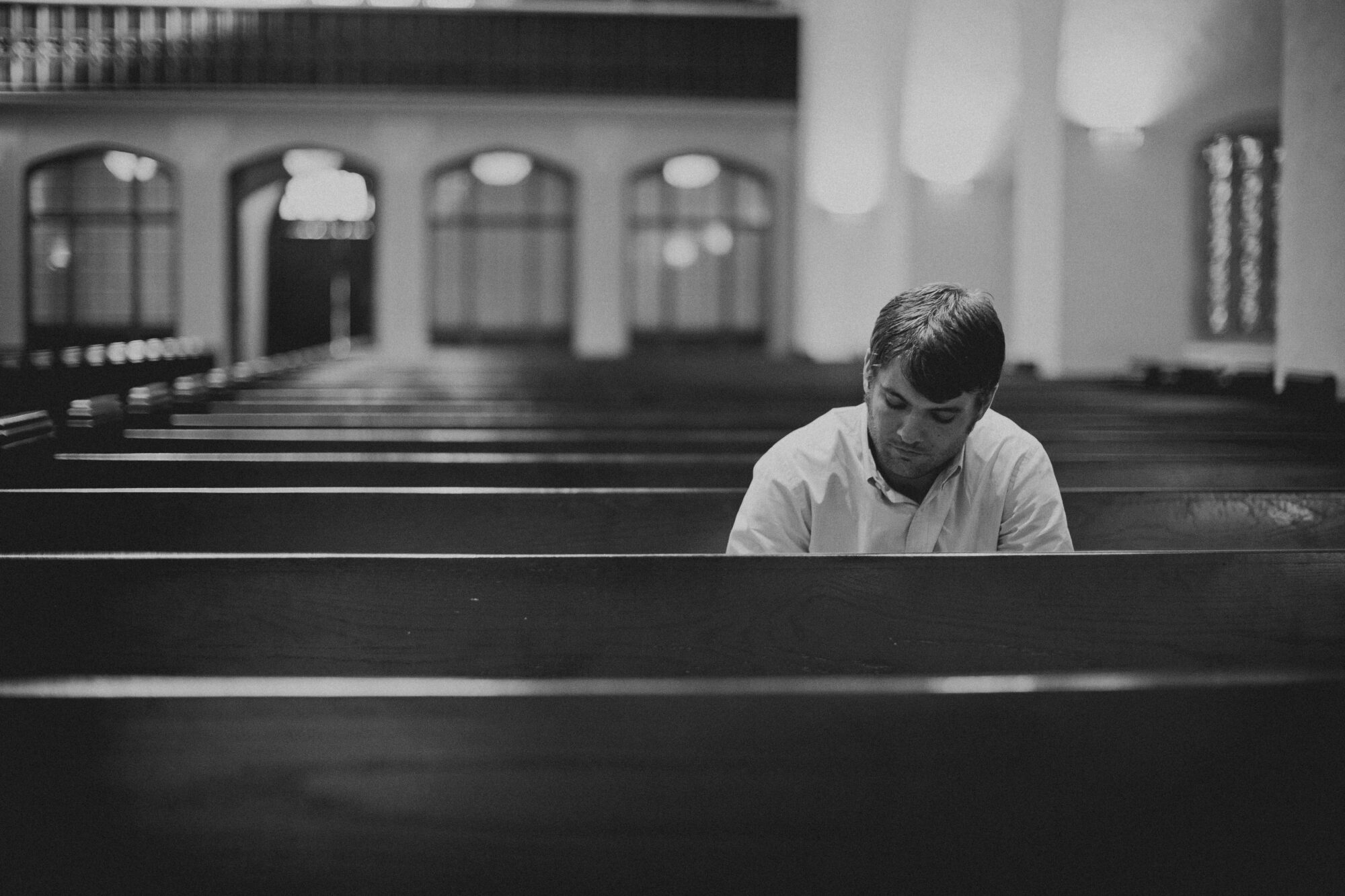Let Doubt Take You Deeper
In our life of faith as apprentices of Jesus, there will inevitably come times and seasons when we’ll enter the shadow land of uncertainty—otherwise known as doubt. Doubts can come with varying levels of quantity and severity, yet often they lead people in one of two directions. For some, doubts can be debilitating, disorienting, and—tragically for some—lead to the dismantling of their faith. However, for others, doubts, while still being very difficult, can lead to a deeper, more authentic faith and a robust trust in the truth claims of Christ. While this topic is worthy of deep and broad examination, here are four ways to let doubt take you deeper in your faith journey.
Let Doubt Take You Deeper by Embracing the Tension
Doubts or doubting can most simply be defined as, “Uncertainty about the truth and reality of spiritual things.” In other words, “to be in doubt is to be of two minds, unsure of what to believe.”[1] The word often translated as “doubt’ in the New Testament connotes a lack of confidence or to waver, hesitate, or have second thoughts.[2]
Yet the presence of doubt seems to be an active ingredient in the life of faith among God’s people. Take, for example, a well-known post-resurrection encounter with Jesus and His bewildered disciples. On the very day of Jesus’ glorious victory over death, He appears to His disciples and invades their fear with His peace and assures them of their Spirit-empowered call. But in John 20:24 we learn that one disciple, for a reason unknown to us, was not present. Many have come to know this disciple as “Doubting Thomas.” However, since Scripture doesn’t call him that, it is wise to not adopt this man-given nickname. But it is clear that Thomas expressed a level of doubt that led him to declare, “Unless I see in His hands the mark of the nails, and place my finger into the mark of the nails, and place my hand into His side, I will never believe” (John 20:25). The tension of this moment was further exacerbated in that Thomas had to wait eight more days until Jesus would appear again. Imagine Thomas sitting with this doubt for the next week, and all that it would have stirred up in his mind, emotions, and will. He had a choice to embrace the tension, and it would become a tension that would lead to a deeper faith.
Let Doubt Take You Deeper by Avoiding Extremes
After the tension of doubt is embraced, it is crucial to avoid extremes. While some valorize doubt, others demonize it. Yet it is best to normalize it. It is also critical to recognize that when doubts surface in our lives, we must distinguish between our faith going through a storm versus being shipwrecked. When Paul exhorted his pastoral protege Timothy to “wage the good warfare,” he followed with the imperative of “holding faith and a good conscience” (1 Timothy 1:19). The difference between one’s faith being shipwrecked and enduring a storm is a matter of obedience. For when we reject holding faith, which involves embracing and being honest about doubts when they arise, and forgo our conscience, which involves an inner sensitivity to God’s ways, it can become destructive. Even in times of doubt, we can trust the narrow path that leads to life by centering our souls upon the One who is the Way, the Truth, and the Life (John 14:6). For as one scholar and pastor insightfully noted, “Trust is not only an act of the mind but an orientation of the whole self in love toward someone.” [3]
Even in times of doubt, we can trust the narrow path that leads to life by centering our souls upon the One who is the Way, the Truth, and the Life (John 14:6).
No doubt storms will arise, but by avoiding extremes, doubt can actually become a pathway to a deeper faith rather than shipwrecking it.
Let Doubt Take You Deeper by Engaging Community
Our doubts can serve like a spade shovel that the Lord invites us to use to dig deeper. Yet we should never doubt—or rather, dig—alone. More often than not, doubts closely correlate with hard questions. When our doubts and questions are met with silence, or worse, condemnation, it can forge a dangerous path. However, when space is made within Christian community for us to ask, wrestle, dig, and wait, doubts can lead to deeper relationships.
When Thomas doubted Jesus’ resurrection, notice that He didn’t send him a nice scroll with a perfectly articulated argument to absolve all of Thomas’ questions. He showed up in person. The antidote of doubt isn’t more answers to satisfy our intellect, it’s an incarnational relationship that meets our God-designed need for intimacy. The contemplative Christian writer Henri Nouwen wisely observed, “Getting answers to my questions is not the goal of the spiritual life. Living in the presence of God is the greater call.”[4]
The antidote of doubt isn’t more answers to satisfy our intellect, it’s an incarnational relationship that meets our God-designed need for intimacy.
Even though Thomas had to wait eight days after “missing” Jesus’ first appearance, he was still with the other disciples. Space was made for him there, and Thomas continued to choose to show up. What a great picture for the church today to be a community that’s compassionate and courageous enough to embrace and make room for doubt to take faith deeper.
Let Doubt Take You Deeper by Worshiping God
The goal of doubt, as stated before, is not answers, but a deeper awe in worship. It seems to be evident that Thomas wasn’t the only one who doubted. In Matthew’s account, there’s an astonishing moment where it says, “Now the eleven disciples went to Galilee, to the mountain to which Jesus had directed them. And when they saw him they worshiped him, but some doubted” (Matthew 28:16-17). Worshiping God and doubting God are not mutually exclusive. It is possible to worship even in your doubt. In fact, doing so is likely a sure sign that your faith is not faulty but genuine.
Worshiping God and doubting God are not mutually exclusive. It is possible to worship even in your doubt. In fact, doing so is likely a sure sign that your faith is not faulty but genuine.
But doubt also led Thomas to a deeper worship of Jesus after he boldly requested not only to see Jesus, but to touch His very wounds. After waiting eight long days, the disciples were inside again with doors locked. This time Thomas was with them, and Jesus suddenly came. Locked doors and doubting hearts were encountered by a Loving Savior. Jesus graciously gave the evidence Thomas had passionately requested, and his response was the worshipful declaration, “My Lord and my God!” (John 20:28). Although Jesus certainly did not condemn Thomas’ or the other disciples’ doubt, He did offer this corrective which we would be wise to take heed of: “Have you believed because you have seen me? Blessed are those who have not seen and yet have believed” (John 20:29).
We can be reminded and encouraged today that our belief and trust in Christ does not need to be grounded in the senses of our sight or even our touch. One day our faith will become sight—until that day, let doubt take you deeper by embracing the tension of it, normalizing it, courageously bringing it into community, and authentically worshiping the God who has set His everlasting love upon us.
Copyright © 2024 Justin Jeppesen. All rights reserved.
[1] C. Stephen Evans, Pocket Dictionary of Apologetics & Philosophy of Religion (Downers Grove, IL: InterVarsity Press, 2002), 36.
[2] William Arndt et al., A Greek-English Lexicon of the New Testament and Other Early Christian Literature (Chicago: University of Chicago Press, 2000), 252.
[3] Swoboda, A.J. After Doubt: How to Question Your Faith Without Losing It. Brazoz Press. Grand Rapids, MI. 2021.p. 19.
[4] Nouwen, Henri. Discernment: Reading the Signs of Daily Life. Harper One. New York, 2013. p. 67.



